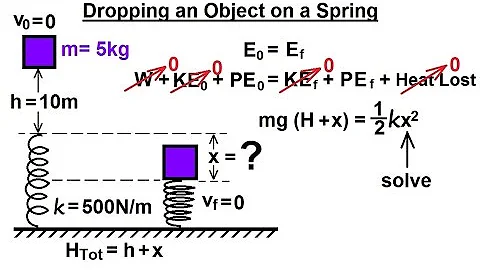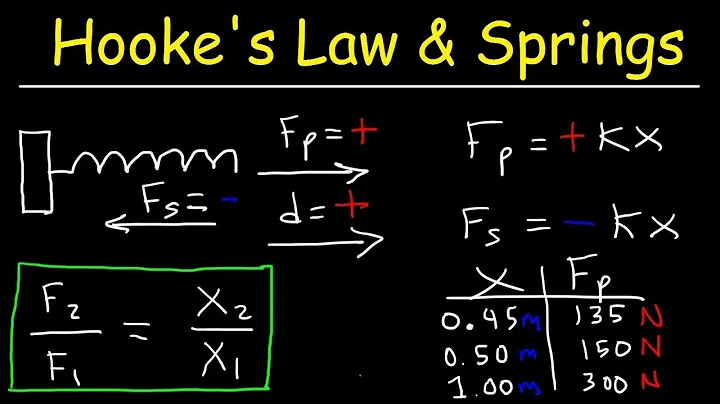spring itself is elastic. After being compressed, the spring will have a tendency to return to its initial state, and therefore has elastic potential energy . We can regard it as the energy stored in the overall system of the spring. So here comes the question: If you put the compressed spring into strong acid, where does the energy of the spring go after the spring dissolves?

The law of conservation of energy tells us that energy cannot disappear out of thin air, and the energy of a spring is certainly no exception. To facilitate discussion, we might as well use an iron spring as an example.
From a microscopic level, an iron spring is made up of a large number of iron atoms combined through the interaction between atoms. Since the nucleus is positively charged, the electrons are negatively charged, so in the phase Between neighboring atoms , the nuclei will attract each other to the neighboring electron groups. At the same time, the neighboring nuclei will repel each other, and the electrons will repel each other.
In other words, the interaction between atoms has both attraction and repulsion, and their strength is closely related to the distance between the atoms (as shown in the figure below).

(Note: The horizontal axis in the figure represents the distance between atoms, and the vertical axis represents the interaction force between atoms)
It can be seen that when the distance is less than "r0", the interaction between atoms appears as repulsion Force, when the distance is greater than "r0", the interaction between atoms appears as an attraction. If the distance exceeds a certain level, the interaction between atoms can be ignored.
When the distance between atoms is "r0", the resultant force between the two is zero, and only in this equilibrium position can adjacent atoms remain stable, so when a large number of atoms are combined together, they will always tend to at the equilibrium position between atoms.

The picture above shows the basic unit of crystal structure of iron at room temperature. This is a body-centered cubic lattice . In this structure, all iron atoms vibrate in the equilibrium position between the atoms. The same is true for the internal crystal structure of an uncompressed iron spring. After
is compressed by the spring, a large number of lattice inside it will deform due to compression, which means that a large number of iron atoms deviate from the original equilibrium position.
In this case, these iron atoms will have a tendency to return to the equilibrium position due to the interaction between the atoms, and therefore have potential energy. The essence of this potential energy is actually electric potential energy. The superposition of these electric potential energies , which manifests itself as the elastic potential energy of the spring at the macro level.

In the process of the spring being dissolved by strong acid, there will be a process of iron atoms breaking away from the main body. For iron atoms with electric potential energy, when they break away from the main body, electric potential energy will be converted into its own kinetic energy , in other words, the speed of these iron atoms will be faster than the normal state (that is, the spring is not compressed).
After this, the kinetic energy of these iron atoms will be transferred to other microscopic particles in the strong acid solution in the form of collisions, and finally manifested as heat energy of the strong acid solution. Why is it heat energy? Because from a microscopic level, the essence of thermal energy is the thermal motion of microscopic particles.

So we can draw a conclusion, that is: If a compressed spring is dissolved in strong acid, then the energy of the spring (elastic potential energy) will be "divided into zeros" and then converted into a strong acid solution Thermal energy , which does not violate the law of conservation of energy.
That is to say, when other conditions remain unchanged, after the compressed spring is dissolved by strong acid, it will release a little more heat energy than the spring that is not compressed, thus making the temperature of the strong acid solution higher. However, this difference in temperature is so subtle that we must use very sophisticated detection instruments to detect it. To illustrate this point, we might as well look at a specific example.

Elastic potential energy can be calculated by the formula "U = 0.5kx^2", where k is the elastic coefficient and x is the deformation amount. Assume that there is a spring with an elastic coefficient of 1000 N/m and can be compressed up to 0.1 meters. Then this After a spring is compressed, its elastic potential energy is only 5 joules at most, and such a small energy can only increase the temperature of 1 liter of water by 0.0012K, which can be said to be negligible.
It should be pointed out that only under ideal circumstances, the spring placed in the strong acid solution can be uniformly dissolved. However, the constituent materials of the spring cannot be completely uniform, and the stress after the spring is compressed is also impossible. It is completely evenly distributed, so the actual situation should be that the dissolution rate of various parts of the spring will be faster or slower.
In this case, the part of the spring that dissolves first will provide a certain degree of rebound space for the part that dissolves later, and the rebound of the spring will stir the nearby solution. In this process, the compressed spring will Part of the elastic potential energy will be converted into the kinetic energy of the spring and the kinetic energy of the solution stirred by the spring.
Well, we will stop here today. Welcome everyone to follow us . See you next time.
(Some pictures in this article are from the Internet. If there is any infringement, please contact the author to delete them)





















